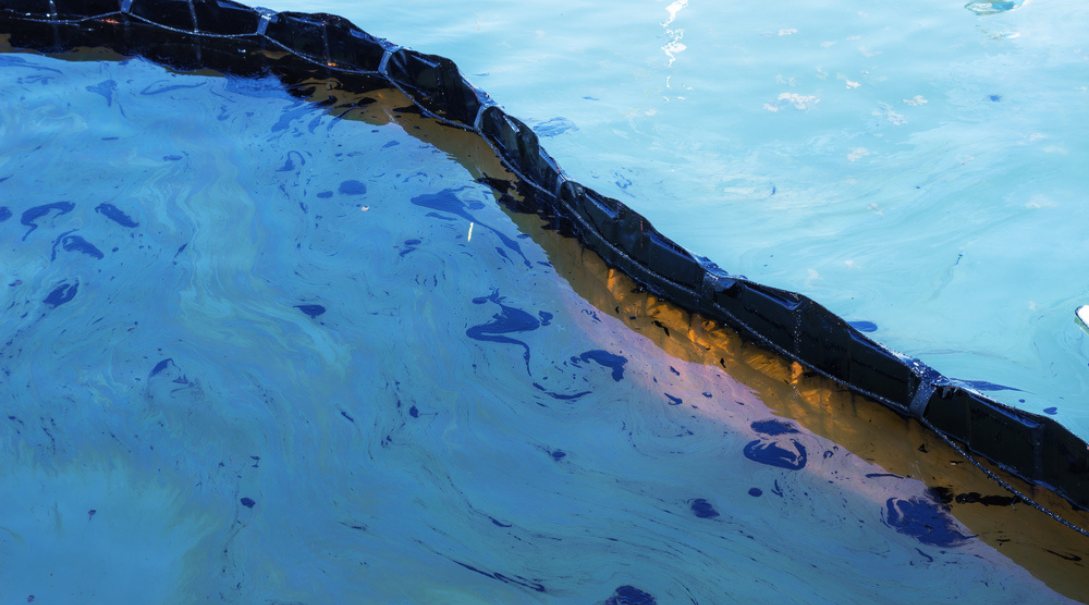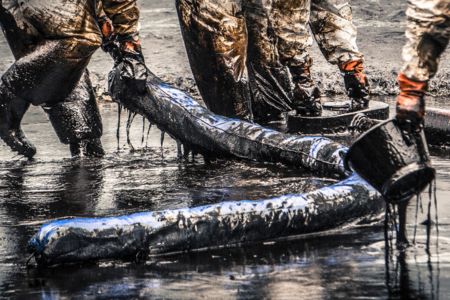Environmental protection requires specialized equipment and materials, including different types of booms.
Booms are critical tools for protecting the environment. They are particularly important for containing spills in water bodies and preventing the spread of contaminants.
Distinct types of booms are utilized depending on the needs and environment in which you are working. In this guide, we will explore the various types of booms, their designs, functionalities, and applications in environmental management.
Table of Contents
What Are Booms? Why Are Booms Important?
A boom is a barrier used in environmental management. It may be called a marine boom, a floating boom, or a containment boom. The varying types of booms are used to contain oil spills and floating debris. They can also redirect or deflect floating debris and other pollutants or be used for other protective measures.
Booms are an essential tool for the environmental management field. They protect oceans, lakes, and other types of water bodies (and what lives in and around them) from damaging environmental hazards.
Understanding the different types of booms and their uses is necessary to select the correct boom for a specific environmental hazard scenario.
Booms are critical in mitigating environmental impacts from oil spills and other pollutants. They act as a physical barrier to keep spills from continually spreading and other materials contained in certain areas.
Types of Booms and Their Unique Applications
The varying types of booms fall into different categories, which are dependent upon their application.
Booms include oil spill booms, silt curtains, containment, exclusion, temporary storage, and wildlife protection booms. In the sections below, we will discuss unique features and construction materials in detail and provide specific use cases for each boom type.
This information will help you understand how each boom type best suits particular environmental conditions and spill types.
Oil Spill Booms
When oil spills occur, there can be substantial damage to the environment and wildlife. Some common causes of oil spills include breaks in pipelines and containers, breaches in oil tankers, and explosions at refineries or oil rigs.
Oil floats on the surface of water and can disperse quickly. Oil spill booms are deployed to contain spills, encircle the area, and act as a dam/floating barrier to control the spread.
Absorbent Booms — These booms efficiently absorb varying types of oil spills, including fuel oils, hydraulic oil, motor oil, gasoline, diesel, jet fuel, and kerosene. There are different types of designs, including:
- Foam-filled oil booms – lightweight; good for low or static currents
- Solid flotation oil booms – general purpose, long-term, low-high currents
- Harbor oil spill booms – durable for permanent installations; stable in rough waters
- Inflatable oil booms – lightweight; mainly used for emergencies and protection
Non-Absorbent Booms — These booms are designed to specifically contain spills, allowing the cleanup crew to use vacuums, skimmer equipment, or absorbents to recover the oil.
Non-absorbent boom come in a variety of designs, such as:
- Lightweight foam-filled booms for shallow and calm waters (canals, small streams, etc.).
- Lightweight, vinyl-coated booms with heavy marine-grade connectors (shoreline and coastal protection).
- Fitted with steel cables for high-tensile strength for fast currents and long-term deployments (harbors, ports, estuaries, and rivers).
Fire-Resistant Booms — These booms are designed to control oil spills during controlled burns of oil spills, known as in-situ burning (IB). They are very heat-resistant with a water-cooled design and can help cost-effectively dispose of large amounts of oil efficiently.
How they work: The booms are directly connected to water pumps during operation, where the water is pumped through the boom, effectively creating a fire-proof seal.
Fire-resistant booms can be used offshore, in open water, and the deep sea.
Silt Curtains
Silt curtains, or turbidity curtains, are floating barriers designed to contain sediment and control turbidity in aquatic environments during construction or dredging activities.
Like in other booms, silt curtains come in different varieties, depending on the need, primarily based on the site’s water conditions and the silt curtain’s permeability/impermeability.
Silt curtains are often made using vinyl laminated or vinyl-coated fabric (with or without screening material for permeability). They are available in various sizes and parameters for qualities such as float size, net buoyancy, ballast, etc.
Here are typical applications for silt curtains:
- Light duty – inland waterways; turbidity control in calm conditions
- Medium duty – streams, rivers, and lakes; turbidity control where winds, waves, and moving water are present
- Heavy duty – deep curtains for difficult flows and conditions; made with the highest level of load components (galvanized steel cables and chains)
Silt curtains are available in impermeable or permeable models. An example of a permeable model is used in rivers, bays, and tidal zones to allow for water flow while still retaining the sediment and silt.
Containment Booms
Containment booms are used for various spills beyond oil, including floating debris and chemical spills. They are highly versatile for planned environmental protection efforts and emergency spill response.
There are multiple use applications and types of booms for floating debris. Some of these include:
- Modular debris booms – easily transported and efficient; good debris collectors for temporary work such as when mowing grass banks or when clearing aquatic weeds out of drainage channels. The debris can then be easily collected and disposed of.
- Permanent debris booms – durable design, deployed permanently; good for rivers and canals for ongoing collection/recycling of trees, logs, seaweed, etc. Adjusts to water fluctuations and allows workboats to clean up debris quickly.
In emergency spill response on land, chemical hazmat booms effectively contain and absorb hazardous chemicals. They typically come in a distinct yellow color and can handle aggressive fluids such as hydrocarbons, acids, and oils.
Exclusion Booms
Sensitive areas need particular protection. Exclusion booms are often used for beaches, intake pumps, marinas, or other areas sensitive to floating hazards. They are designed to prevent the spread of hazards such as debris, aquatic plants, and jellyfish.
These booms provide physical protection barriers and are designed based on the purpose and aquatic environment. Exclusion booms are typically designed with rotation-molded yellow or black floats behind the curtain.
Examples of exclusion booms and their applications include:
- Permanent pollution booms – often used to protect critical infrastructure from obstructions and control pollution from sensitive areas; have a fully flush face for automatic deflection and a self-clearing design.
- Litter fence booms – often used in wetland habitats and other sensitive areas; designed with additional height or freeboard to protect from both floating and wind-blown debris.
Temporary Storage Booms
Another valuable type of boom is the temporary storage boom. These are important in emergencies because they temporarily contain and store oil or other pollutants on the water surface during spill response operations.
The primary design features of temporary storage booms are:
- A containment partition which floats on the surface of the water and extends above the surface
- A “curtain” or “skirt” that sinks underneath the surface of the water
The configurations will vary depending on the wind conditions and the current. They are typically lightweight for rapid deployments while maintaining durability and effectiveness, enabling these booms to hold collected oil until it can be pumped out or otherwise removed, such as in-situ burning.
Key applications include incidents requiring rapid response, such as spills from oil tankers or explosions on offshore oil rigs.
Temporary storage booms are critical to spill response strategies for minimizing environmental impact.
Wildlife Protection Booms
Oil spills can cause great harm to wildlife. Marine birds, sea turtles, mammals, fish, and shellfish are all at risk when spills occur.
Wildlife protection booms are designed to safeguard aquatic life and birds during oil spill incidents. The freeboard (what sits above the water), the draft/skirt (what extends below the water), and the flotation and chains are typically designed not to entrap marine life but to deflect them and keep them away from the contaminated areas.
These types of booms reduce harm to the ecosystem.
Ideal uses for wildlife protection booms would be near the shore, offshore, and ocean currents.
Selecting the Right Boom for Your Needs
Booms are an effective tool in environmental protection. However, it is necessary to select the appropriate boom for your needs.
Several factors, including the spill substance, water conditions, and deployment area, should be considered when choosing the right boom.
Evaluate the situation. Are you trying to contain oil or keep debris from infrastructure? Are you in rough seas or still waters? Is this a dredging operation, and are you trying to control turbidity? Do you need a temporary or a permanent solution?
These are the types of initial questions to ask. After that, analyze the specifications and features of models of the type of boom you need. Some locations and operations will need more heavy-duty booms, while others may be effective with light or medium-duty boom construction. The specs on the freeboard, skirt, tension cables, ballast, and other parts will vary – and can often be customized.
It is also important to consider the best boom to reduce environmental impact. Do you need to respond quickly to a spreading oil spill? Choose one that can be rapidly deployed. Do you need a tall litter fence to protect a wetland from wind-blown debris? Oil-absorbent booms are good choices for protecting sensitive environments and complying with environmental laws and regulations.
With this information, you can make an informed decision on the right type of boom while considering environmental impact, effectiveness, and regulatory compliance.
Best Practices for Boom Deployment and Maintenance
To optimize operations, best practices for deploying, maintaining, and retrieving booms in spill response operations should be followed.
Here are the best practices when working with booms for environmental protection:
- Upon deployment, ensure proper anchoring for the boom. Improper or insufficient anchoring often results in boom failure. A double 40-lb. anchor system is a good standard for oil spill containment booms in an open body of water.
- Monitor stationary booms frequently due to changes produced by winds, tidal currents, shifting tides, or other factors that influence water depth, direction, and force of motion. These can interfere with or impair the boom’s ability to hold oil.
- Cleaning is best conducted using a mild detergent and bristle brush. Harsh chemicals can damage the material. Power steam cleaning can weaken seams and welds. Thoroughly rinse the boom and inspect it before storage for damage.
- Repair kits and adhesives are used for ongoing maintenance.
A properly deployed and maintained boom can ensure maximum effectiveness and durability.
AOTC’s Expertise in Environmental Protection Solutions
If you are dealing with an emergency or spill cleanup, consult AOTC for expert advice, training, and solutions in selecting and deploying the right booms for their environmental protection needs.
We are committed to providing industry-leading services for spill containment and environmental management.
AOTC offers trusted, reliable, 24/7 emergency spill response services. We serve cities across Florida, Georgia, and Alabama with fast deployments and guaranteed compliance. Contact us today to learn more.


